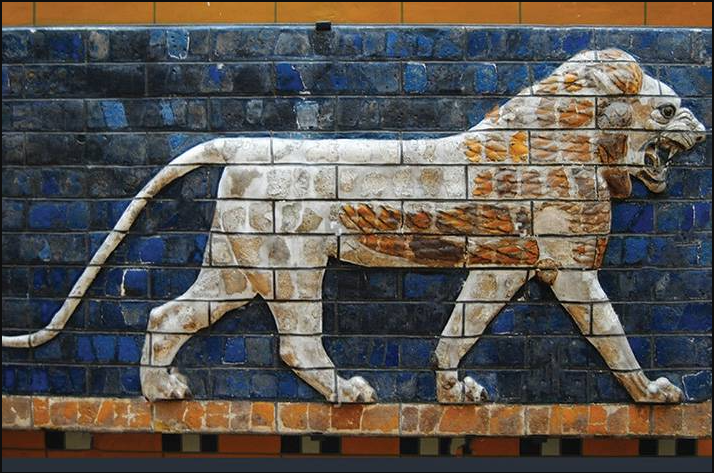Istanbul Museum Guide for First-Time Visitors
Apart from all its admirable beauties, Istanbul, which has strategic importance, unites the continents and seas due to its geographical location; It is an ancient city that has been a center of attraction throughout its history and hosted three great empires. The Yenikapı excavations carried out between 2004 and 2013 revealed that the city’s history as a settlement dates back to the Neolithic Age, 8500 years before today. In every step you will take in Istanbul; You will come across the traces of the culture accumulated for thousands of years belonging to the Roman, Byzantine, Ottoman Empires, and finally Turkey. The essence of the word; Istanbul is a world heritage site. Humanity also has to ensure that the preserved examples of this heritage reach the next generations.
Three Museums Entered Through One Door; Istanbul Archeology Museums
Today, the Istanbul Archeology Museum is a part of a group of museums consisting of three historical buildings, each of which is a work of art in terms of architecture. This museum area, located to the south of Topkapı Palace, is where the foundations of contemporary museology in our country were laid by Osman Hamdi Bey, both an archaeologist and a world-class painter.
Tiled Kiosk Museum

The oldest building of the museum complex is the Tiled Kiosk, which was built as a summer palace by Fatih Sultan Mehmet in 1472. The interest in collecting historical artifacts, which started in the time of Fatih Sultan Mehmet in the Ottoman Empire, gained an institutional structure with the establishment of the Museum-i Hümayun in 1869. From this date on, the historical artifacts captured in the Ottoman lands began to be collected in Hagia Eirene. When the artifacts obtained during the archaeological excavations by Osman Hamdi Bey could no longer fit in Hagia Irene, the Tiled Kiosk was restored and turned into a museum, and opened to service in 1880. Turkish tile and ceramic works are exhibited in the Tiled Kiosk Museum today.
Museum of Ancient Oriental Works

The building was built as Sanayi-i Nefise Mektebi (Fine Arts Academy) in 1883 by the famous architect of the time, Alexandre Vallaury, at the request of Osman Hamdi Bey. When the academy, Turkey’s first fine arts school, was moved to another location in 1917, this building was transferred to the Museums Directorate. From this date on, all works of art and archaeological artifacts were categorized. In addition, archaeological artifacts from the pre-Islamic and pre-Greek eras, obtained from the excavations in Anatolia, Mesopotamia, Egypt, and the Arabian Peninsula, began to be exhibited. Finally, in the Museum of Ancient Oriental Works, which was restored in 2000, you witness the history of Anatolia and the Near East and the progress of human history. For example, here are two of the three copies of the Treaty of Kadesh, the first written treaty in history, signed in 1280 BC between the Egyptians and the Hittites, found in Boğazköy’s excavations. The cuneiform tablet collection of 75,000 pieces can also be visited at the Museum of Ancient Oriental Works.
Archeology Museum

Osman Hamdi Bey uncovered a large king necropolis (grave area) during his excavations in Sayda, which is located within the borders of Libya, between 1887-1888. A new museum building was needed to display the many sarcophagi and other artifacts unearthed in this excavation, which caused great excitement worldwide. In order to meet this need, a building designed by architect Alexandre Vallaury, this time as a museum on its own, was built right across the Tiled Kiosk and opened to service in 1891.
The building, which is the first museum building in Turkey, is among the firsts in the world in this respect. The years when the museum was built were the heyday of architect Alexandre Vallaury’s career. Vallury, who also taught architecture in his first work, Sanayi-i Nefise, until 1908, played a significant role in the development of Turkish architectural history, both as a performer and as an instructor. Many of the buildings shown to us when we talk about Ottoman Architecture in Istanbul today are his work. For example, the Hidayet Mosque in Eminönü, the General Directorate of the Ottoman Bank in Karaköy, the Pera Palace Hotel in Beyoğlu, which was built as the first hotel of Istanbul, and the Hazeran Han in Karaköy are still standing today and are still used for the purpose for which they were initially built.
Istanbul Archaeological Museum can be visited every day between 09:00 am and 19:30 during the summer period between 1 April and 31 October. Between 09:00 and 17:30 during the winter period between 31 October and 1 April.
These articles may also be of interest to you:
Top 8 Museums You Must Visit in Istanbul
Top 10 Museums in Turkey with Their Magnificence and History
9 Places Where You Can See the Personal Belongings of Mustafa Kemal Atatürk



